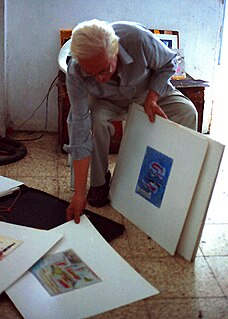
Luis Enrique Tábara was a master Ecuadorian painter and teacher representing a whole Hispanic pictorial and artistic culture.
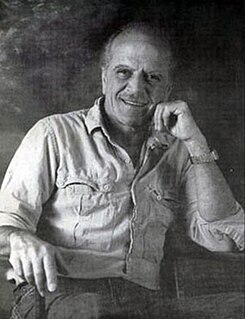
Rodolfo Abularach was a Guatemalan painter and printmaker of Palestinian descent.
Jorge Blanco is a Venezuelan-born American artist, who emigrated to the United States in 1999. He has spent his professional career working as a sculptor, graphic designer and illustrator. His work is in public sites in the United States, South America and Japan. Jorge Blanco is an international artist who has created a sculptural language over more than thirty years. Blanco has placed 25 public art sculptures in large format across the globe. In addition to public art, Blanco continues his life trajectory with collectible sculptures, his comic strip "The Castaway," and furniture design. His artworks form part of sales in auction houses such as Sotheby's and Christie's. In 1971 Blanco graduated as an industrial designer from the Neumann Institute of Design in Caracas, Venezuela. Under the mentorship of European artists living as expatriates in Caracas, Blanco learned to integrate industrial design with creative processes. His instructors were predominantly artists, such as Gego and Cornelis Zitman, who emphasized artistry in their classrooms. Blanco graduated with a degree in industrial design upon the completion of his first furniture line for children, which was a thesis project. Immediately after graduation Blanco began his career as a sculptor, freelance graphic designer and furniture designer. In the late 70s he studied at Rome's Academy of Fine Arts. During his stay in Europe Blanco also uncovered the world of cartoonists. This discovery led Blanco to create the comic strip, "The Castaway." In 1980 "The Castaway" made its debut in El Diario de Caracas. T Castaway was widely disseminated across the city, including the city's metro system. Eight books have been published on Blanco's "The Castaway." As "The Castaway" continued to live its success, Blanco illustrated more than twenty storybooks for children and countless educational books. His accomplishments as illustrator led him to El Museo de los Niños, where he served as Creative Director for twenty years.Like the work of his primary influences, Klee, Miró, Herbin and Calder, Blanco's presents his sculptures in primary colors. Blanco's largest body of work has been created and fabricated in the United States, where he lives and works since 1999. His artwork has received multiple accolades.
Humberto Castro is an important Cuban painter.
Mario Algaze is a Cuban-American photographer.
Vicente Dopico Lerner was a Cuban painter. Dopico Lerner also wrote on Latin American art and was the director of the Cuban Museum of Art and Culture in Miami.
Adriano Buergo, is a Cuban artist specializing in painting, drawing and installations.
Luis Vega De Castro is a Cuban artist. Since 1980 he has lived in Miami, Florida, United States. He works in graphic design, painting, drawing and illustration, and has been noted for his work in film posters.
Emilio Falero is a Cuban Fine Arts painter residing in Florida.
Rubén Torres Llorca is a Cuban artist specializing in painting, drawing, sculpture, collages, and photography. He studied from 1972 to 1976 at the Escuela Nacional de Bellas Artes "San Alejandro" in Havana and from 1976 to 1981, studied at the Instituto Superior de Arte (ISA), also in Havana. Torres resided in Mexico City, Mexico from 1990 to 1993 and has resided in Miami, Florida, since 1993.
Juan Roberto Diago Durruthy"Diago" is a Cuban contemporary artist who graduated at the Escuela Nacional de Bellas Artes "San Alejandro," Havana. Grandson of artist Roberto Juan Diago Querol, his grandmother was a First Violinist in the Havana Symphony Orchestra. Born in an intellectual background, he nevertheless lived his childhood in a poor neighborhood, el barrio Pogolotti.
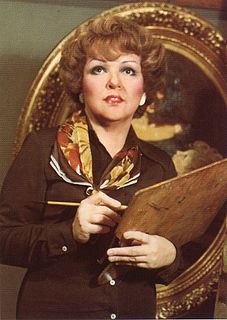
Dulce Beatriz, née Dulce Hernández Moreno de Ayala is a Cuban-born artist known for her Impressionist-style paintings.
Wladimiro Politano is an Italian sculptor, painter and drawer.

Rogelio Polesello was an Argentine painter, muralist and sculptor. He was best known for making Op art known in Latin America. He won two Konex Awards; one in 1982 and another in 2012. He was born in Buenos Aires.
Elba Damast was a Venezuelan artist.
Miguel Jorge (1928-1984), also known as “Micky” Jorge, was a Cuban artist who was influential in the establishment of South Florida's early Latin American art market in the Greater Miami area from the 1960s through the 1980s.
Luis Marín is a Cuban Neo-expressionist painter and visual artist. He has been active internationally in the arts since the 1980s and is featured in the permanent collections of several prominent fine art institutions including the Museum of Latin American Art and Museum of Art Fort Lauderdale.
Alfredo Martinez is a Cuban-American art collector, fine art photographer, curator, dealer, promoter, and former gallerist. He became a prominent figure in the Latin American fine art market internationally and particularly in South Florida after he began organizing art exhibitions in the mid-1980s. Martinez's professional and philanthropic art events and patronage activities were distinctive for referencing contemporary social issues, such as AIDS and underrepresented cultures in the arts. Martinez owned and operated two major art galleries and other art-related businesses based in Coral Gables, Florida. He has organized art exhibitions, lectures, and auctions throughout the United States and Latin America, including South Florida, New Hampshire, Argentina, Panama, and Costa Rica.
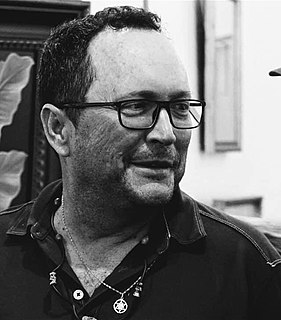
Adriano Adolfo Fernandez Nicot is a Cuban-American painter and poet based in Miami, Florida. He is known for a distinctive Neo-Expressionist style and is closely associated with the prominent Cuban artists Antonia Eiriz, Manuel Vidal Fernández, and Hilda Vidal Valdés. After becoming established in Cuba, Nicot relocated to the United States in the late 1990s. His work has since been featured in several books and exhibitions in the US and in Latin America.
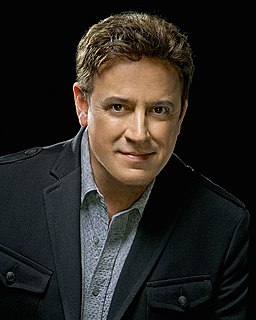
Miguel Rodez is a Cuban born contemporary visual artist, curator, and former attorney who has resided in the United States since 1969. Artistically, Rodez is known for his textured luminescent paintings and his Minimalist-Dadaist sculptures. Among his most displayed works are Custom-made Paradise, his round portrait of Spanish Surrealist Salvador Dalí from Rodez’s XX Century Masters series, and the sensual kinetic giant inflatable sculpture Lucky Link from his Imagine Liberation series. He has written several published articles on art, law, and community issues and has been an Editor in Chief for law magazines and publications.










